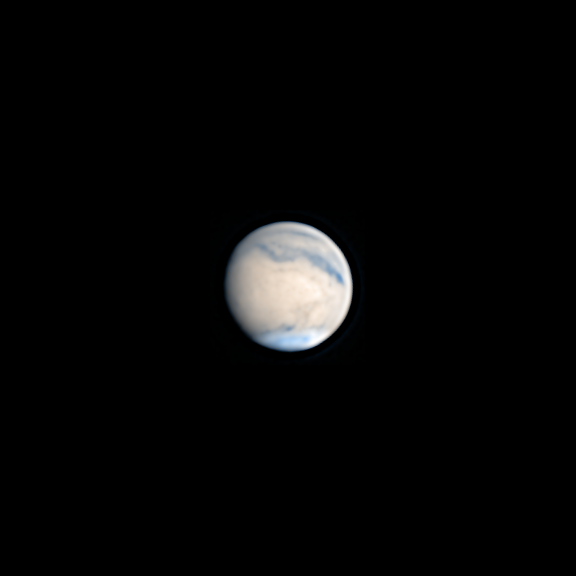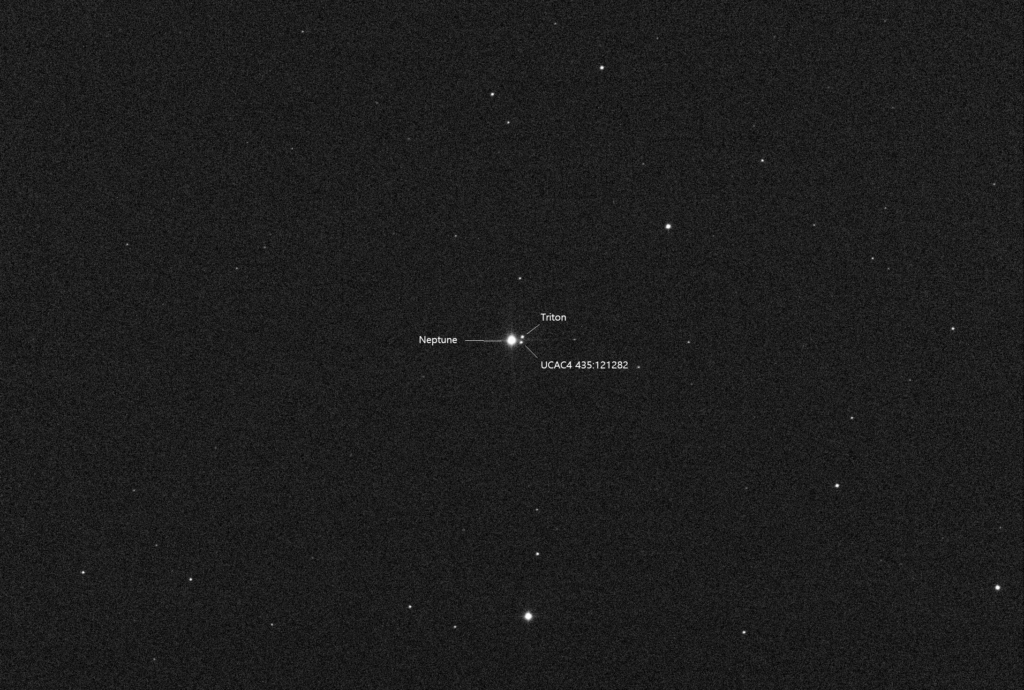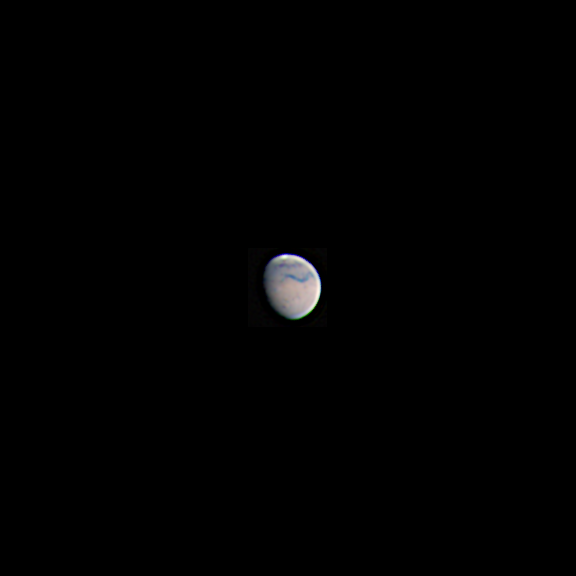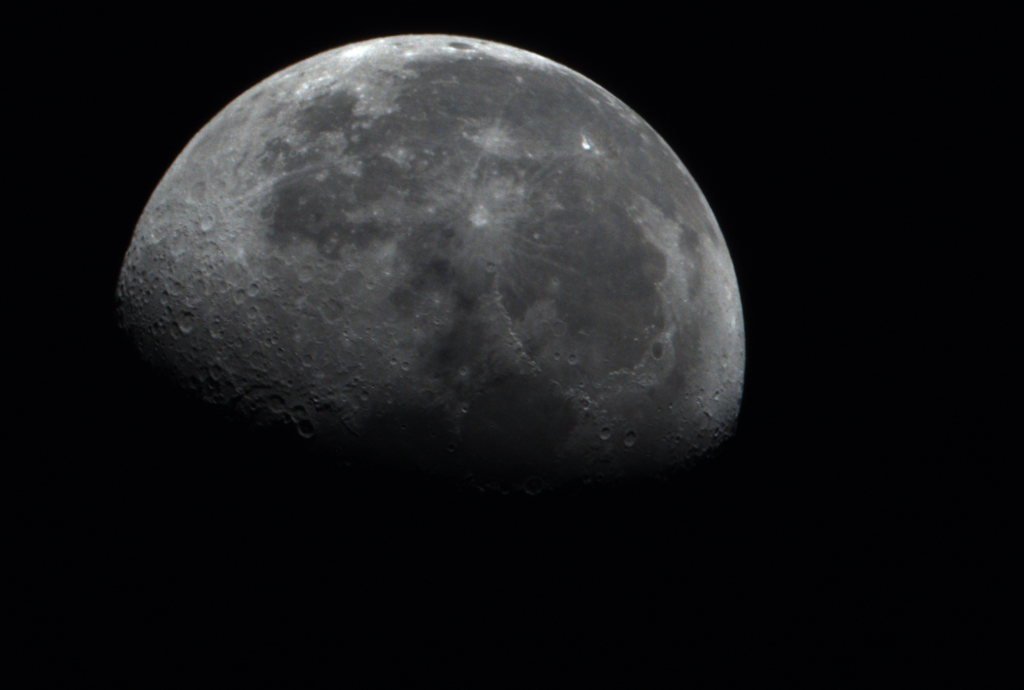Mars is finally rising above my tree line a little earlier in the morning. The seeing has been fairly poor the last couple of days but it has settled down enough to get some useful pictures. The prominent blue feature on the northern limb of the planet is seasonal cloud cover over the north polar ice cap. This cloud feature is known as the north polar hood and is often seen forming in Mars’ early autumn and may last until late spring.
As usual, south is at the top. If you want to identify any of the surface features using a Martian map, the image’s central meridian is 179.2°.



